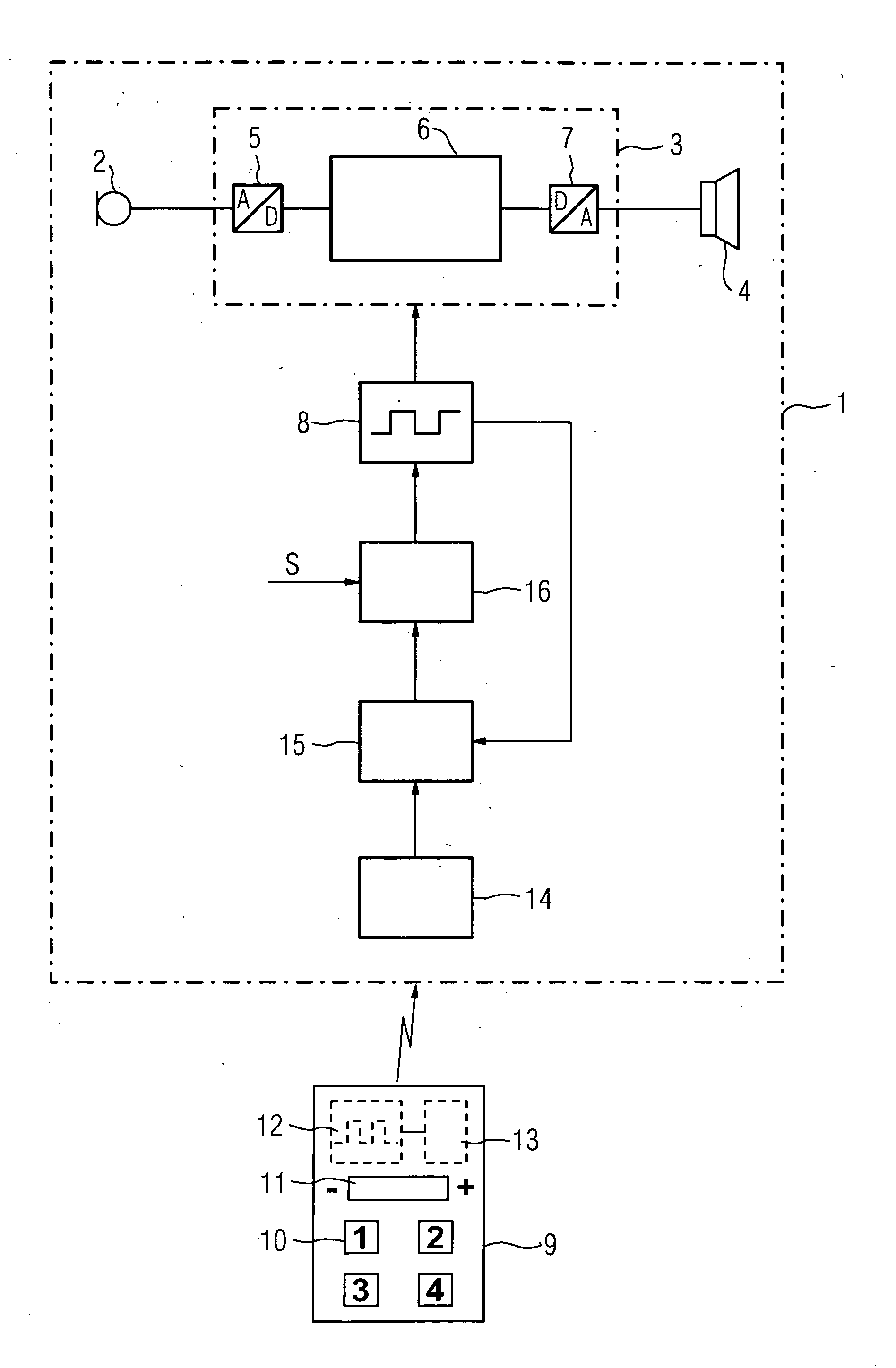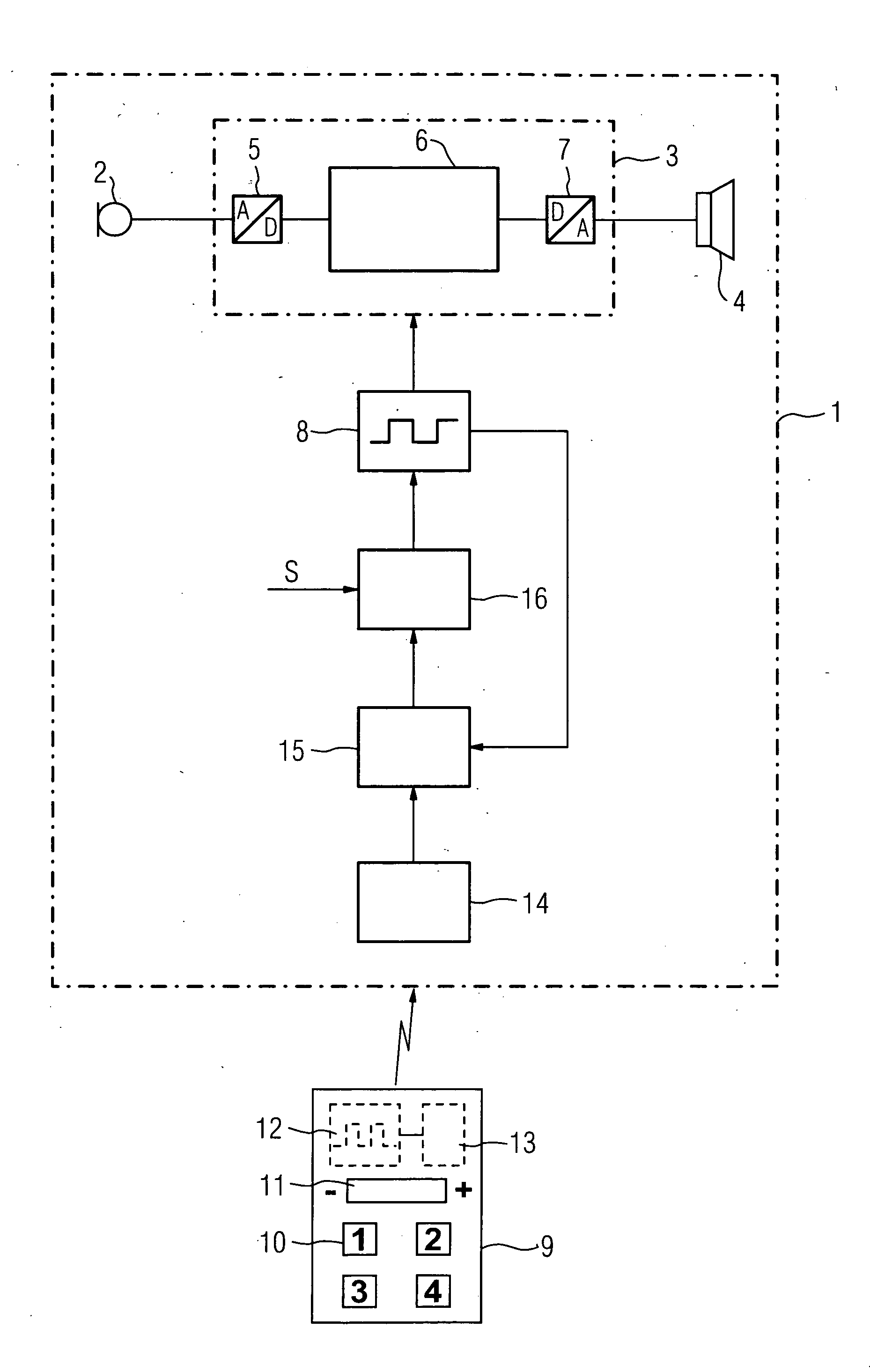Stabilization of the system clock in a hearing aid
a technology of system clock and hearing aid, which is applied in the field of hearing aid, can solve the problems of filtering, however inaccurate, etc., and achieve the effects of stabilizing the internal system clock of the hearing aid, low cost, and high level of clock period accuracy
- Summary
- Abstract
- Description
- Claims
- Application Information
AI Technical Summary
Benefits of technology
Problems solved by technology
Method used
Image
Examples
Embodiment Construction
[0016] The invention is described in more detail below, with reference to an exemplary embodiment. For this embodiment the figure shows a hearing aid 1 with a microphone 2 for recording an acoustic input signal and converting said signal into an electrical signal, a signal processing unit 3 for processing and frequency-dependent amplification of the electrical signal and a receiver 4 for converting the processed and amplified signal into an acoustic output signal which is supplied to the ear of a hearing aid wearer. The signal processing unit 3 in the exemplary embodiment is designed as a digital circuit and thus comprises an A / D converter for converting the electrical input signal into a digital input signal as well as a D / A converter 7 for converting the processed, digital signal into an analog output signal. Between these two converters the signal is processed in a signal processing unit 6 realized in digital circuitry.
[0017] The digital components of the hearing aid 1 are clock...
PUM
 Login to View More
Login to View More Abstract
Description
Claims
Application Information
 Login to View More
Login to View More - R&D
- Intellectual Property
- Life Sciences
- Materials
- Tech Scout
- Unparalleled Data Quality
- Higher Quality Content
- 60% Fewer Hallucinations
Browse by: Latest US Patents, China's latest patents, Technical Efficacy Thesaurus, Application Domain, Technology Topic, Popular Technical Reports.
© 2025 PatSnap. All rights reserved.Legal|Privacy policy|Modern Slavery Act Transparency Statement|Sitemap|About US| Contact US: help@patsnap.com


